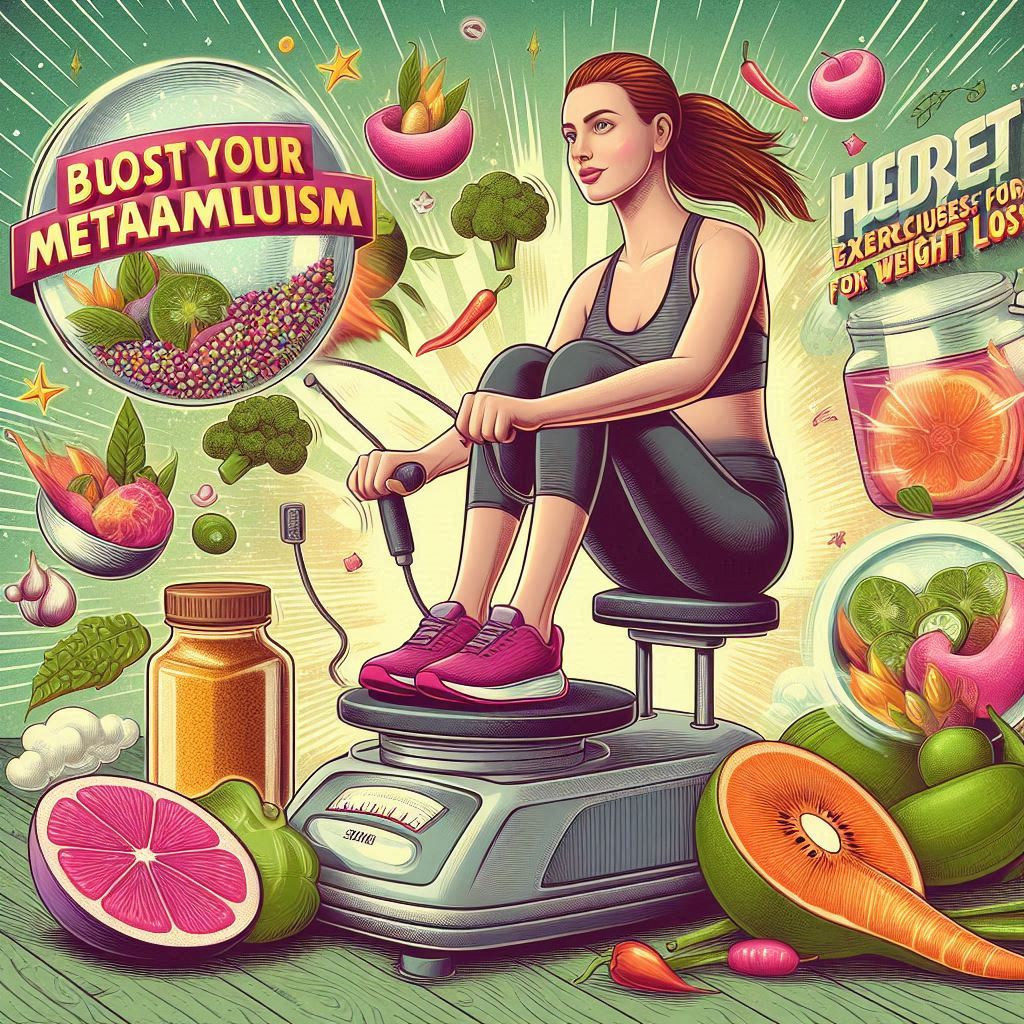The Journey Begins: More Than Just Calories
Imagine this: you’re at a social gathering, and the topic of conversation inevitably turns to fitness. Everyone has their opinions about the best exercises for weight loss. Some swear by cardio, others by strength training. But what if the secret to boosting your metabolism and shedding those stubborn pounds isn’t what everyone else is doing? Let’s dive into the lesser-known exercises that not only rev up your metabolism but also help you lose weight effectively.
The Science of Metabolism
Before we jump into the exercises, let’s understand what metabolism is. Metabolism refers to all the chemical processes in your body that keep you alive and functioning. This includes everything from breathing to repairing cells. Your basal metabolic rate (BMR) is the number of calories your body needs to perform these basic functions at rest.
Fact: Did you know that muscle tissue burns more calories than fat tissue, even when you’re not working out? This is why building muscle is crucial for boosting your metabolism.
Beyond the Treadmill: The Power of HIIT
High-Intensity Interval Training (HIIT) is often touted for its fat-burning benefits, but its impact on metabolism is even more impressive. HIIT involves short bursts of intense exercise followed by brief rest periods. This not only burns calories during the workout but also significantly elevates your metabolism post-exercise—a phenomenon known as excess post-exercise oxygen consumption (EPOC).
Stat: Research published in the Journal of Sports Science & Medicine shows that HIIT can increase metabolic rate for up to 48 hours after a workout.
Strength Training: More Than Just Muscle
While many associate weightlifting with bulking up, strength training is a powerful tool for weight loss and metabolism boosting. When you lift weights, you create tiny tears in your muscle fibers. Your body uses energy (calories) to repair these fibers, leading to muscle growth. More muscle means a higher BMR.
Pro Tip: Compound movements like squats, deadlifts, and bench presses engage multiple muscle groups, making them more effective for boosting metabolism compared to isolation exercises like bicep curls.
The Underdog: Plyometrics
Plyometric exercises, or jump training, involve explosive movements that increase your heart rate and engage multiple muscle groups simultaneously. This combination makes plyometrics an excellent choice for boosting metabolism.
Exercise Example: Box jumps, burpees, and jump squats are great plyometric exercises. They improve cardiovascular health, build muscle, and increase metabolic rate.
Interesting Fact: A study in the Journal of Strength and Conditioning Research found that participants who incorporated plyometric training into their routines experienced a significant increase in metabolic rate.
The Silent Worker: Isometric Exercises
Isometric exercises involve contracting your muscles without moving your joints. Think planks and wall sits. While these exercises might seem less intense, they’re highly effective for building strength and boosting metabolism.
Why It Works: Holding a position like a plank requires sustained muscle contraction, which demands energy. This, in turn, boosts your metabolic rate.
Exercise Tip: Add variations to your isometric exercises, such as side planks or single-leg wall sits, to engage more muscle groups and further enhance the metabolic benefits.
The Hybrid Approach: Combining Cardio and Strength
Combining cardiovascular exercises with strength training can provide a comprehensive metabolic boost. Circuit training, which alternates between cardio and strength exercises with minimal rest, is particularly effective.
Circuit Training Example:
- Jump rope for 1 minute
- Perform 15 kettlebell swings
- Do 20 push-ups
- Sprint for 30 seconds
- Rest for 1 minute
- Repeat for 3-5 rounds
Stat: A study in the Journal of Applied Physiology found that circuit training increased participants’ metabolic rates more than traditional steady-state cardio or strength training alone.
Functional Training: Real-Life Movements
Functional training focuses on exercises that mimic real-life movements, making daily activities easier while also boosting metabolism. These exercises often involve multiple joints and muscle groups, increasing the caloric burn.
Exercise Examples: Kettlebell swings, battle ropes, and medicine ball slams are excellent functional exercises that elevate your heart rate and engage various muscles.
Yoga: The Metabolic Surfer
While yoga might not be the first exercise that comes to mind for boosting metabolism, certain forms like Vinyasa and Power Yoga can be quite demanding. These styles involve continuous movement, which increases heart rate and builds muscle.
Fact: A study published in the journal Alternative Therapies in Health and Medicine found that participants practicing Vinyasa yoga experienced a significant increase in metabolic rate.
NEAT: The Everyday Calorie Burner
Non-Exercise Activity Thermogenesis (NEAT) refers to the calories burned through everyday activities like walking, cleaning, and even fidgeting. Increasing your NEAT can significantly boost your daily caloric burn without structured exercise.
Tips to Increase NEAT:
- Take the stairs instead of the elevator
- Walk or bike to work
- Stand while talking on the phone
- Take regular breaks to move around if you have a desk job
Recovery: The Unsung Hero
While intense workouts are crucial, recovery plays an equally important role in boosting metabolism and losing weight. Proper rest and recovery allow your muscles to repair and grow, which in turn increases your BMR.
Rest Tips:
- Aim for 7-9 hours of quality sleep each night
- Incorporate active recovery, such as light stretching or yoga, on rest days
- Stay hydrated and maintain a balanced diet to support recovery
Putting It All Together: A Sample Weekly Plan
Here’s a sample weekly exercise plan that incorporates various metabolic-boosting exercises:
Monday: HIIT
- Warm-up: 5 minutes of dynamic stretching
- Workout: 20 seconds sprint, 10 seconds rest, repeat for 20 minutes
- Cool-down: 5 minutes of walking
Tuesday: Strength Training
- Warm-up: 5 minutes of light cardio
- Workout: Squats, deadlifts, bench press, rows (3 sets of 12 reps each)
- Cool-down: 5 minutes of stretching
Wednesday: Active Recovery
- Light yoga or stretching for 30 minutes
Thursday: Plyometrics
- Warm-up: 5 minutes of dynamic stretching
- Workout: Box jumps, burpees, jump squats (3 sets of 15 reps each)
- Cool-down: 5 minutes of stretching
Friday: Circuit Training
- Warm-up: 5 minutes of light cardio
- Workout: Jump rope, kettlebell swings, push-ups, sprints (3-5 rounds)
- Cool-down: 5 minutes of stretching
Saturday: Functional Training
- Warm-up: 5 minutes of light cardio
- Workout: Kettlebell swings, battle ropes, medicine ball slams (3 sets of 15 reps each)
- Cool-down: 5 minutes of stretching
Sunday: Rest and Recovery
- Focus on getting quality sleep and hydration
Conclusion: Your Metabolic Journey Awaits
Boosting your metabolism and losing weight doesn’t have to be a monotonous journey filled with endless cardio sessions. By incorporating a variety of exercises, from HIIT and strength training to plyometrics and functional movements, you can elevate your metabolic rate, build muscle, and shed those unwanted pounds. Remember, the key is consistency and finding a routine that you enjoy. So, lace up your sneakers, grab those weights, and embark on your metabolic journey today!

